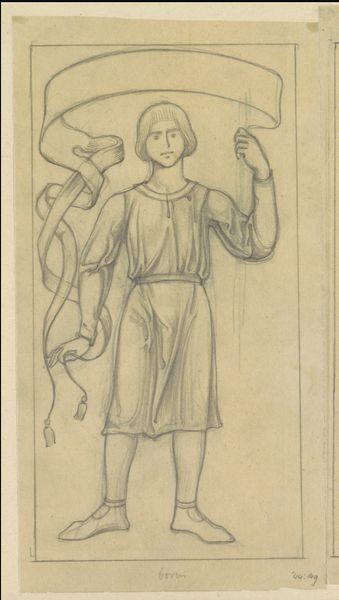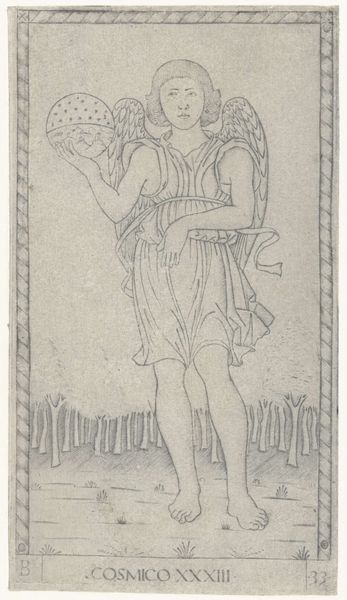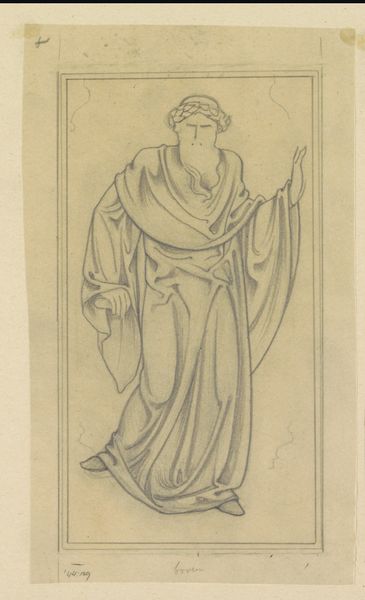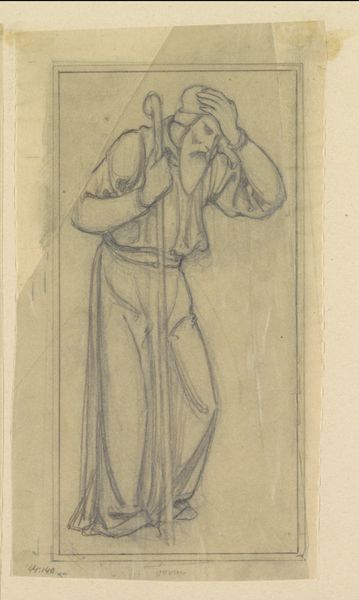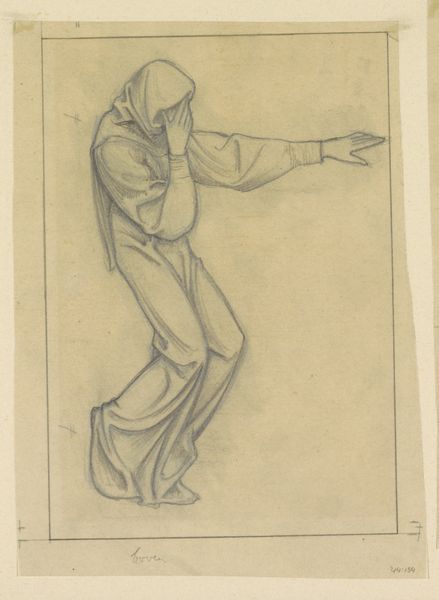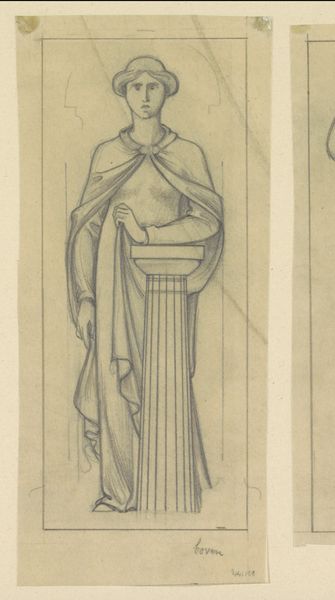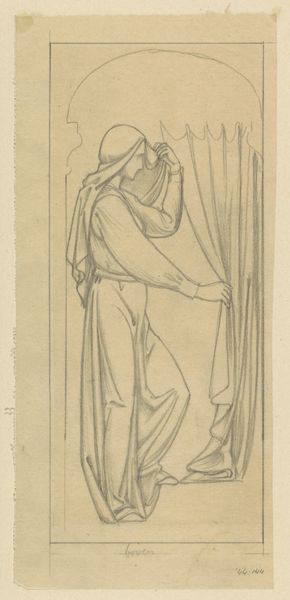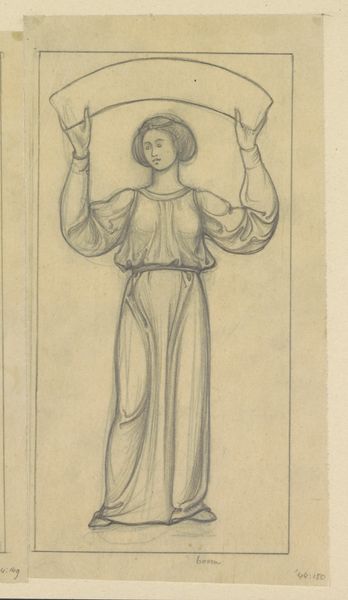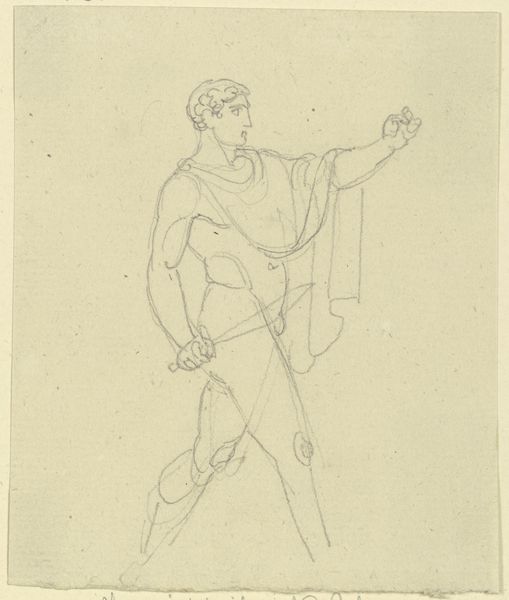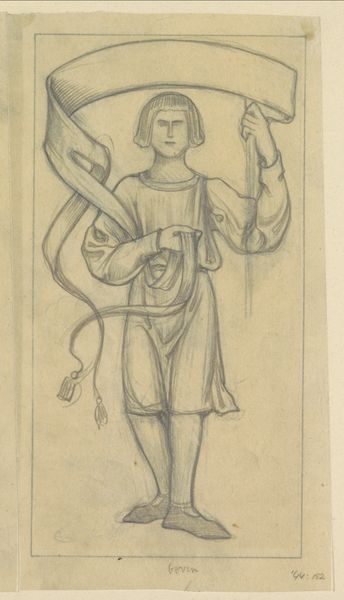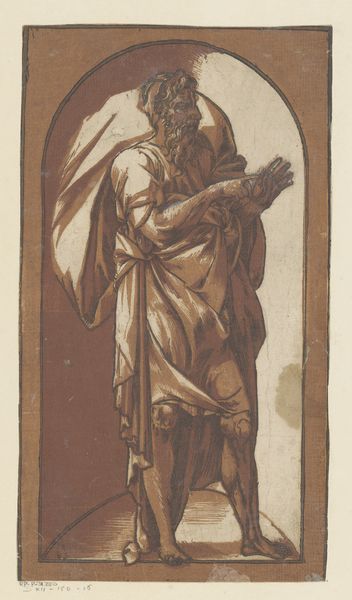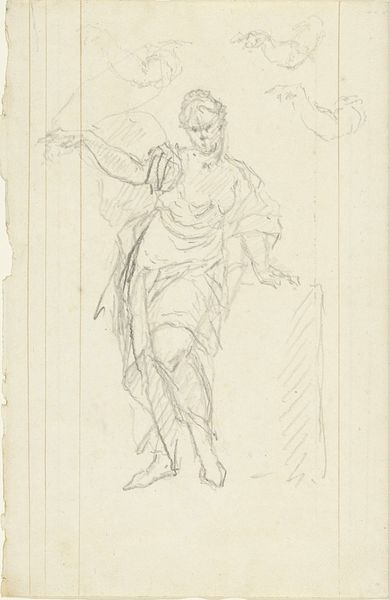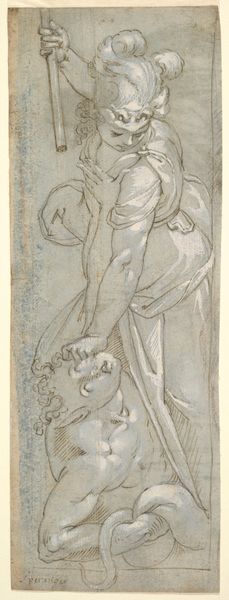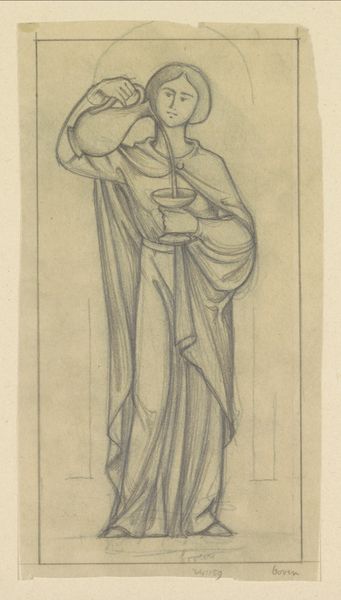
Ontwerp voor wandschildering in de Beurs van Berlage: staande man met banderol 1869 - 1925
0:00
0:00
drawing, paper, pencil
#
portrait
#
drawing
#
imaginative character sketch
#
light pencil work
#
cartoon sketch
#
paper
#
form
#
personal sketchbook
#
idea generation sketch
#
ink drawing experimentation
#
pen-ink sketch
#
pencil
#
line
#
sketchbook drawing
#
history-painting
#
storyboard and sketchbook work
#
academic-art
#
sketchbook art
Dimensions: height 236 mm, width 138 mm
Copyright: Rijks Museum: Open Domain
Antoon Derkinderen sketched this design for a mural in the Beurs van Berlage, featuring a standing man with a banderol. The banderol, a long flag or banner, often carries inscriptions or symbols, serving as a declaration or proclamation. Throughout history, figures bearing banners have appeared in various guises, from ancient Roman standard-bearers to medieval heralds. Consider the role of such figures in Renaissance art, where they often accompany triumphal processions, embodying civic pride and communal values. The act of holding high a banner transcends mere physical support; it becomes an assertion of power and a declaration of intent. The very gesture of bearing a banner can evoke deep psychological responses, stirring feelings of unity, purpose, and even defiance. It is a potent symbol that resonates across epochs, reminding us of our shared human need for identity, belonging, and the enduring power of visual communication. Over time, this symbol has resurfaced, evolved, and taken on new meanings in different historical contexts.
Comments
No comments
Be the first to comment and join the conversation on the ultimate creative platform.
